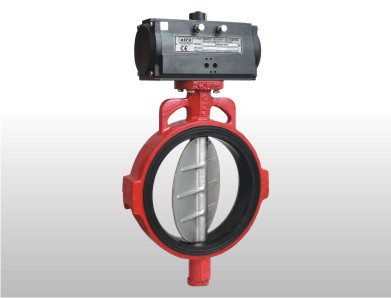Butterfly valves are one of the most versatile valves on the market, with various uses in different industries. In this blog post, we’ll look at the different types of butterfly valves and their services so that you can select the suitable valve for your application.
Introduction
Different types of butterfly valves serve other purposes in various industries. Choosing the correct type of valve for a particular application is critical to ensuring the process runs smoothly and efficiently. This article will examine the different kinds of butterfly valves and their uses.
Butterfly valves are classified according to their disc and body design. The three most common butterfly valves are wafer, lug, and flanged.
Wafer butterfly valves have a disc held in place by two metal plates, or wafers, on either side of the body. This type of valve is used when space constraints or a double-ended pipeline is required.
Lug butterfly valves have a disc attached to the body with lugs or bolts. This type of valve is often used in high-pressure applications.
Flanged butterfly valves have a disc connected to the body with flanges. Flanged butterfly valves are often used in larger-diameter pipelines or applications where erosion resistance is essential.
What are Butterfly Valves?
Butterfly valves are one of the most widely used valves in the industry today. Butterfly valves get their name from the fact that the disk that controls the flow of fluid through the valve resembles a butterfly. Butterfly valves are available in various sizes and construction materials to suit multiple applications.
Butterfly valves are often used when it is necessary to control the flow of fluids such as water, air, steam, or oil. Butterfly valves can be used in both on/off and throttling applications. In an on/off application, the butterfly valve is fully open or fully closed; in a throttling application, the butterfly valve is partially open to regulate flow.
Butterfly valves are well suited for many industries, including chemical, food and beverage, pharmaceutical, pulp and paper, and water treatment.
Different Types of Butterfly Valves
There are several different types of butterfly valves, each with unique benefits and applications. The most common butterfly valves are wafers, lugs, and double offset.
Wafer Butterfly Valve: A wafer butterfly valve has a disc attached to the stem with two or more bolts. The valve’s body is sandwiched between two halves of the pipe flange. This type of valve is well suited for use in applications where space is limited.
Lug Butterfly Valve: A lug butterfly valve has a disc attached to the stem with two or more lugs. The body of the valve is bolted to the pipe flange. Lug butterfly valves are often used in applications where isolating the valve’s body from the pipeline is necessary.
Double Offset Butterfly Valve: A double offset butterfly valve has a disc that is offset from the centerline of the stem. The body of the valve is bolted to the pipe flange. Dual offset butterfly valves are often used in high-pressure applications where it is necessary to reduce wear on the seat and minimize leaks.
Butterfly valves are available in various sizes and construction materials for multiple applications. They are well done for use in many industries, including chemical processing, food and beverage processing, pharmaceutical manufacturing, pulp and paper manufacturing, and water treatment.
Uses for Butterfly Valves
Butterfly valves are often used when it is necessary to control the flow of fluids such as water, air, steam, or oil. They can be used in both on/off and throttling applications. Butterfly valves are well suited for many industries, including chemical, food and beverage, pharmaceutical, pulp and paper, and water treatment.
Uses for butterfly valves vary depending on the type of valve and the application in which it will be used. Wafer butterfly valves are often used in clean water applications such as drinking water or irrigation systems. Lug butterfly valves are often used in dirty water applications or where it is necessary to isolate the valve’s body from the pipeline. Double-offset butterfly valves are often used in high-pressure or high-temperature applications where it is needed to reduce wear on the seat and minimize leaks.
How to Select the Right Butterfly Valve for Your Application
When selecting a butterfly valve for an application, it is essential to consider the operating conditions, including the media, temperature, and pressure. The type of end connection will also need to be considered, as well as the required flow rate. Butterfly valves are available in various sizes and construction materials to suit multiple applications.
Wafer butterfly valves are often used in clean water applications, while lug butterfly valves are often used in dirty water applications. Double-offset butterfly valves are often used in high-pressure or high-temperature applications. Selecting the correct type of butterfly valve for an application will ensure optimal performance and prevent problems such as leaks or premature wear.
Conclusion
When selecting a butterfly valve for an application, the operating conditions, such as the media, temperature and pressure, must be considered. The type of end connection and required flow rate must also be considered. Butterfly valves are available in different sizes and construction materials for various applications. Wafer butterfly valves are often used for clean water applications, while lug butterfly valves are better for dirty water applications. Double-offset butterfly valves manufacturers are typically used in high-pressure or high-temperature applications.

